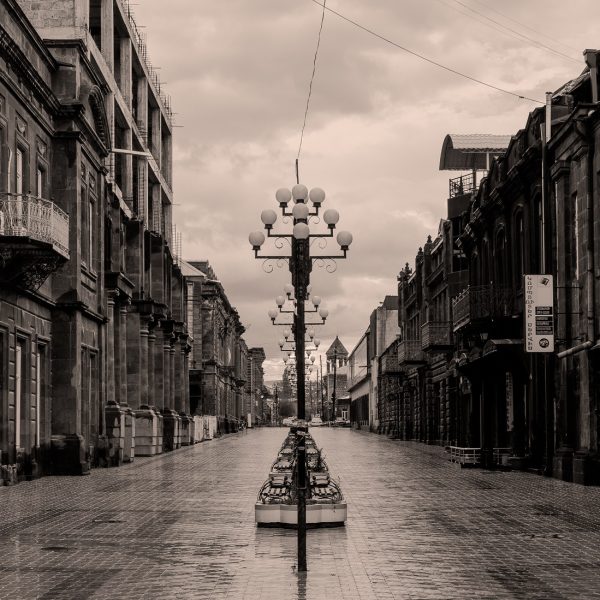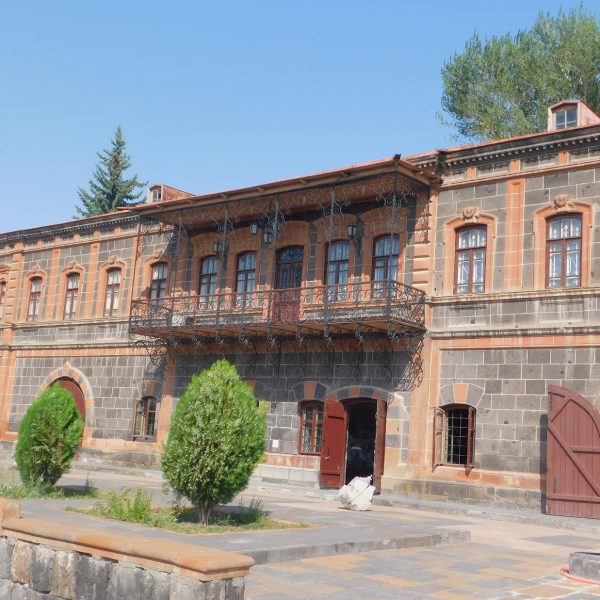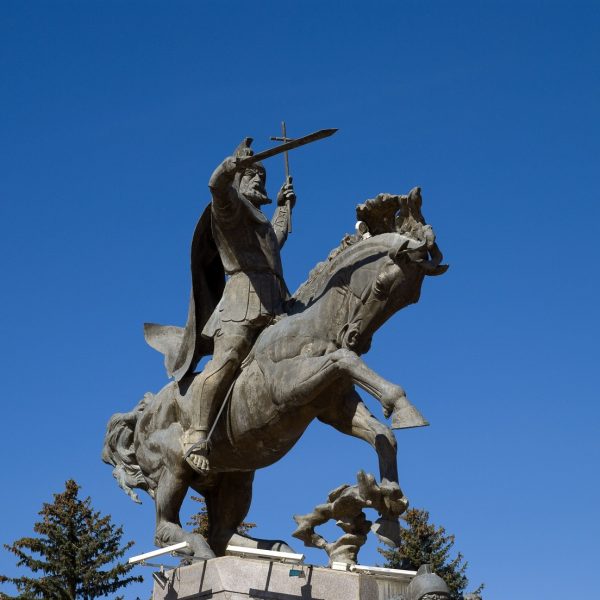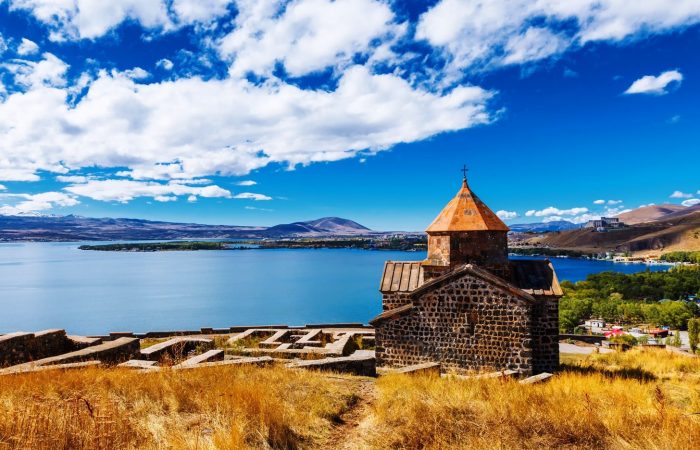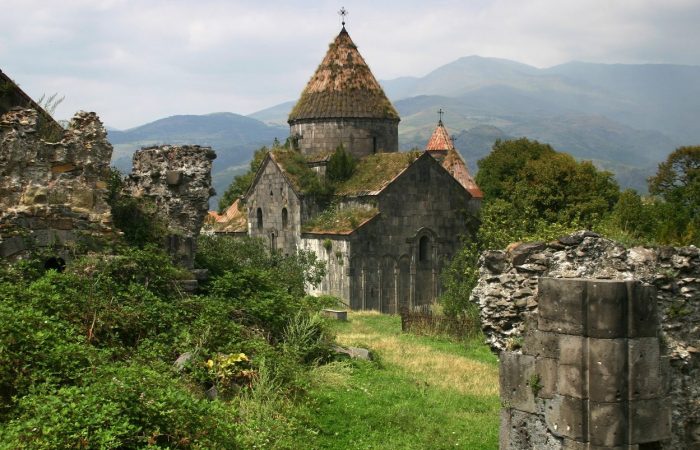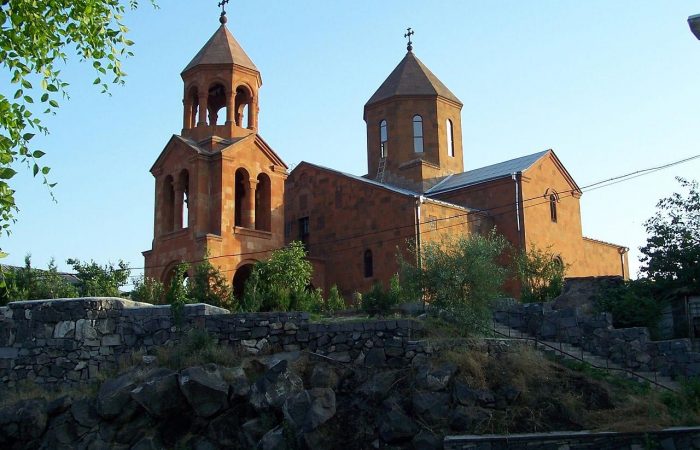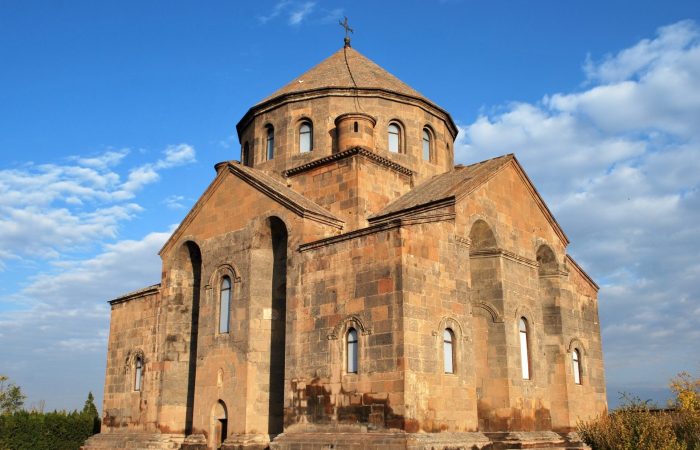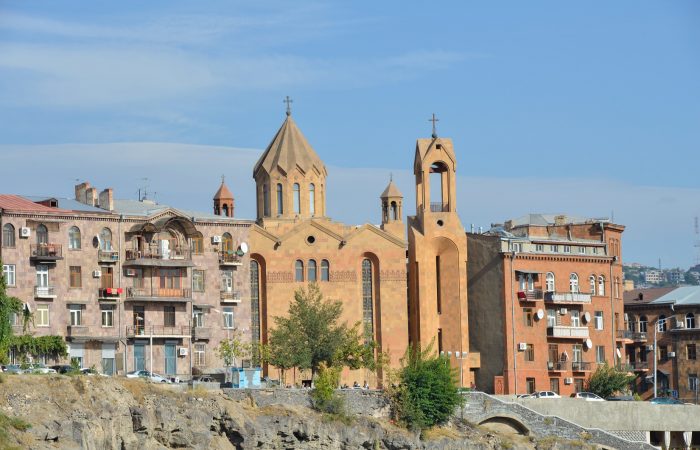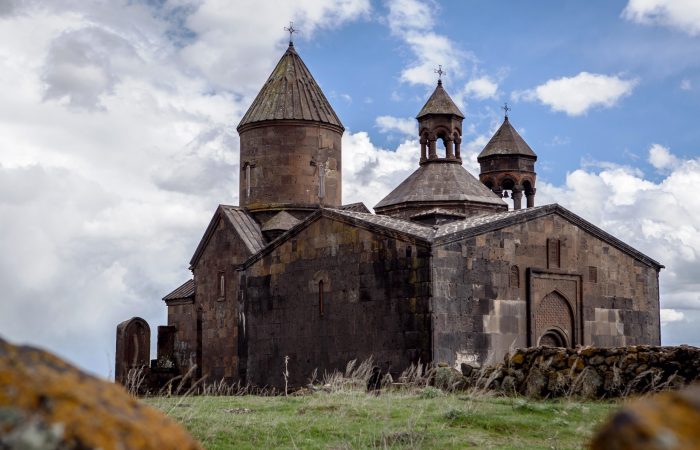Gyumri: Brief History
The history of the settlement of Gyumri goes to hundreds of years ago and was even mentioned in Xenophon’s work called “Anabasis.”
The city of Gyumri was not popular until the 19th century and before that it used to appear either under Persian, or Turkish rule because of which it was constantly being ruined and plundered. The most impressive period of this city started in the 19th century, when it was captured by Russia (back then Gyumri was under Persian control) and 400 families were released. In 1813 the treaty of Gyulistan was signed between Russia and Persia. Upon the treaty Gyumri appeared under Russian control, and it offered new perspectives for the city’s development.
Gyumri bore defensive significance and therefore Russians strengthened the city turning it into a powerful bastion against Turkey and Persia. In 1837 the construction of the fortress was completed. Afterward, a Russian church was built within the fortress. So Gyumri became a fortress-city.
Presently, Gyumri is the second largest city in Armenia with approximately 150,000 people the majority of which are Armenians.
Gyumri: Various Names
Throughout its existence Gyumri has got several names – Kumayri, Gyumri, Aleksandrapol and Leninakan. The city was renamed Gyumri only in 1991. This said it should be noted, that the city even today is very often referred to as Leninakan.
- The city was called Kumayri during the Old and Middle Ages.
- The city was called Gyumri until 1837.
- The city was called Aleksandrapol within 1837-1924, that is in Russian Armenia.
- The city was called Leninakan during 1924-1990, that is during the Soviet period.
- The city was renamed Gyumri in 1991 and since then has been known so.
Gyumri: Disastrous Earthquakes
If this city were a human, then he/she would probably be one of the strongest and most optimistic ones. Gyumri has twice experienced disastrous earthquakes. The first was in October, 1926, and the second occurred on December 7, 1988. The city has yet not fully revived. The earthquake of 1988 destroyed a territory of 1.8 million square kilometers and around 100,000 people became homeless. The ruins can be seen even today.
Gyumri: Climate
While Gyurmi is suitable for a visit in any time of the year, it is worth visiting within middle spring to early fall period, if you can’t stand the cold. Winters are really cold in this city and the average January temperature usually reaches (-9.8) degrees Celsius. Summers are usually hot and the average temperature is 19 degrees Celsius. If the summer is very hot, then be prepared to face a temperature as high as 36 degrees Celsius.
Gyumri: Places to Visit
The city of Gyurmi is itself an interesting destination for every traveler, as sometimes even the simple buildings might attract the eye. Nevertheless, if you need specific places to visit and see in this beautiful and brave city, then consider the following:
Churches
Saint Seven Wounds Church – This amazing church can be found in the central square. It was built in 1874-1886. The church was initially named Holy Mother Church but it’s more known as the Church of Seven Wounds because of the Holy Mother’s icon with seven wounds found in the martyrium. Black stone was used in the construction of the church.
It’s no secret that a number of churches were closed during the Soviet Union period but this church continued to operate. There is one reason for this – the church has five different altars meant for people of various declarations of faith.
There is an interesting story regarding the church, which has it that the church used to pay taxes to Russia and when the time had come to pay the taxes the church had not managed to gather the necessary amount of money. The Russian forces had come to expropriate the church’s property and to close it. At that time one of the priests knelt at the Main Altar and started praying to God asking Him to help them. While uttering his prayers, the priest was touching the ground with his head and suddenly a stone moved and having put it aside the priest discovered 30 poods of gold.
Saint All Savior Church – The church was built in 1869-1874. The architect was Tadevos Antikyan. During the Soviet period it served as a philharmonic hall and was ruined during the 1988 earthquake. Presently the church is being repaired.
Among other churches are Saint Nshan Church built in 1852-1856 (Abovyan Street), Saint Sargis Church built in 2008 (Golden Hill), Saint Hripsime Church built in 1991 (Franz Werfel Square) and Saint Hakob Church (Paruyr Sevak Street).
Monuments
The city is full of monuments. The majority of them are dedicated to Armenian artists (writer Avetik Isahakyan, brilliant actor Mher Mkrtchyan). In 2008 a monument to the victims of 1988 earthquake was erected in the city.
Mother Armenia Monument – Those who have got acquainted with capital Yerevan’s places of interest no doubt have visited the Victory Park where the Mother Armenia Monument is located. Surprising as it might seem, there is another Mother Armenia Monument in Gyumri. To reach it and to have a closer look you have to climb a number of stairs, so if you are planning to see this monument make sure you are not tired otherwise you will either choose not to climb the stairs, or if you do climb, then you will feel most exhausted.
The statue was completed in 1975. The architects were Ara Sargsyan and Erem Vardanyan.
An interesting thing to know about the statue is that while it appears an ordinary statue for the Armenians it appears something out of ordinary for the Turkish side, because as you look from the Turkish border you see only the back of the statue and from the back the monument resembles a dragon.
House-Museums
If you love museums and especially house-museums, then there are a number of museums to consider:
House-Museum of Hovhannes Shiraz – The house-museum has been operating since 2003 and is dedicated to beloved Armenian poet Hovhannes Shiraz. This house was gifted to the poet in 1983 but he actually never lived there as he died in 1984. Still if you would love to get acquainted with the poet’s life and works, it is worth to be visited.
House-Museum of Avetik Isahakyan – This is the house where Armenian writer Avetik Isahakyan was born. The house was converted into a museum in 1975 and from that time on has been visited by such prominent Armenians like Catholicos of all Armenians Vazgen I and world-known writer William Saroyan.
House-Museum of Mher Mkrtchyan – Known as Frunzik, Mher Mkrtchyan is one of the most beloved Armenian actors who will hardly be forgotten. Mher Mkrtchyan as a person and as an artist is irreplaceable for Armenians and there is no Armenian who hasn’t seen at least one movie in which he was featured and who doesn’t know by heart at least one phrase he made in those movies. The actor passed away in 1993 but he continuous to live for the Armenian people.
The house-museum was officially opened in 2006 with the one goal to introduce the coming generations to the life and activities of an artist who he himself represented a great value for the Armenian culture.
Gyumri: Getting There
If you don’t have your own car or haven’t rented one, then there are three options to get to Gyumri – by taxi, by bus or by train. The first option is no doubt more convenient but is more expensive too. So if you don’t want to spend much money and traveling by bus or by train is not a big problem for you, then choose between the last two.
Several things to know about the bus, more precisely minibus travel is that it lasts around two hours, and it will cost you 1500 Dram (approximately $4). The buses start from Sasuntsi David Station.
As to traveling by train, the train also starts from Sasuntsi David Station. But there is one problem – you need to wake up really early as the train leaves at 7.40 am. Just like the buses it also costs 1500 Dram (approximately $4) but it takes longer to get to the city; around 5 hours. This option is slower compared to the rest but it gives a chance to enjoy the views; while the first half of the journey might appear boring for you, the second half promises to be interesting and abundant with beautiful scenes.

